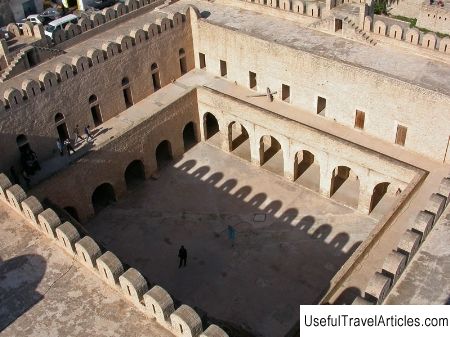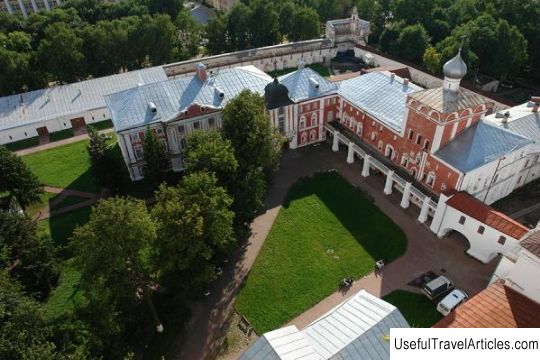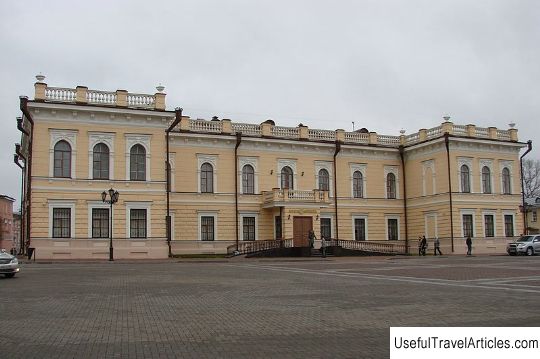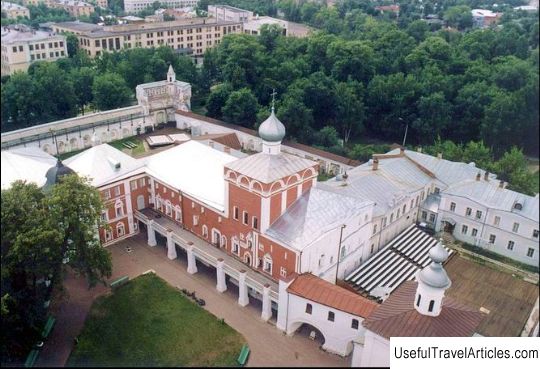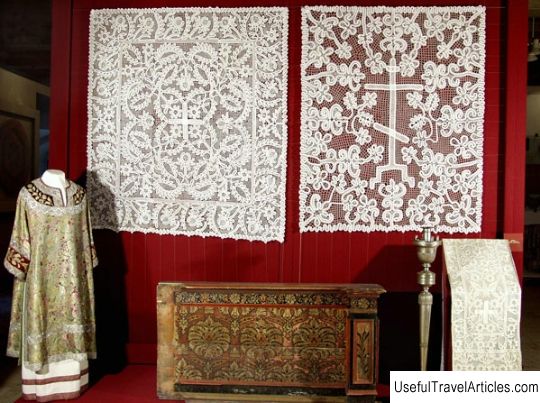Vologda Kremlin description and photo - Russia - North-West: Vologda
Rating: 8,2/10 (654 votes) 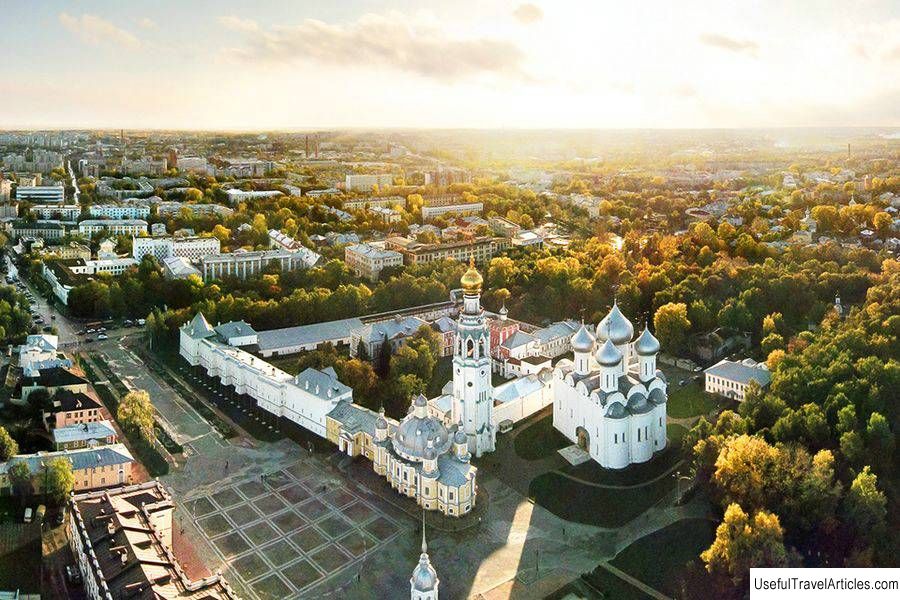
Vologda Kremlin description and photos - Russia - North-West: Vologda. Detailed information about the attraction. Description, photos and a map showing the nearest significant objects. Photo and descriptionThe Vologda Kremlin is a huge complex of the Bishops' Court located in the center of Vologda. Unique monuments of church and civil architecture of the 16th-19th centuries have been preserved here, and expositions of the Vologda Museum-Reserve are located. Vologda FortressWhat is now called the Vologda Kremlin is the courtyard of the Vologda archbishops ... However, there was a real Kremlin in Vologda, and its history is very interesting. Ivan the Terrible decided to turn Vologda into his northern residence and began a grandiose construction. From 1567 to 1571, a fortress, a stone cathedral and a new shipyard on the river were built here. The fortress was conceived as grandiose: there should have been twenty towers, strong walls with ramparts and ditches. Historians name two possible masters, those who built it: the Russian Razmysl Petrov and the Englishman Humphrey Loki. Construction was in full swing when the king's plans suddenly changed and he left the city. The legend connects this with the fact that a brick fell on Grozny's head at the construction site of the St. Sophia Cathedral, and he took it for a bad omen. In fact, historians still argue about the true reason. One way or another - the grandiose fortress remained unfinished. Only a piece of the wall and 11 towers turned out to be stone, the rest was completed from wood after the departure of Grozny. The fortifications were renovated several times, but only in wood, and from the end of the 18th century they completely lost their strategic importance. The fortress was dilapidated, the locals were gradually dismantling it for building materials, finally, in 1822, with the improvement of the city center, it was finally dismantled. Only the remnants of ramparts and ponds formed on the site of the former fortress ditches remind of the former Kremlin. The buildings of the Kremlin partially became the basis for the stone fence of the bishop's building with four corner towers. It was created in the 1670s during the reign of Archbishop Simeon, who started a big construction here in lean years in order to give the surrounding population work. The most interesting and tallest of these buildings is the southwest tower, which is now used by the museum for temporary exhibitions. At the same time, the Holy Gates and the Church of the Exaltation above them were built. Sophia and Resurrection Cathedrals Ivan the Terrible not only started the construction of his residence here, but also arranged an archbishop's see in Vologda. Before that, the bishop's court was wooden next to the wooden Resurrection Cathedral - now it is being transferred to the city center to the new stone Sophia Cathedral. The new church was built in the image of the Assumption Cathedral in Moscow. The construction was carried out for a long time and in stages: when one of the chapels was consecrated and were already serving there, everything else was still being completed. The building suffered during the Time of Troubles in 1612, and the second birth of the cathedral was in 1613, when it was put in order and re-consecrated. There are well-preserved frescoes made at the very end of the 18th century by the icon painting team of Dmitry Plekhanov, the Pereslavl icon painter, who also painted the Moscow Archangel Cathedral and the Assumption Cathedral in the Trinity-Sergius Lavra. The new Baroque iconostasis, which has survived to this day, was installed in 1733. In the middle of the 19th century, the cathedral was overhauled and a fence was installed around it. After the revolution, the building was transferred to the museum, and in the 1960s, restoration followed, which returned it to its original appearance of the 17th century: later extensions were dismantled, the domes were replaced, the windows cut in the 19th century were narrowed, and the icons were cleaned of later inscriptions. Now the temple is under the jurisdiction of the museum, access there is open in the summer, sometimes church services are held. The bell tower of the cathedral was initially wooden, but in 1659 it was built of stone. In 1870 it was completely rebuilt: the top was dismantled and replaced with a new one, in the Gothic style, designed by the architect V. Schildknecht. Vologda was lucky - almost all the bells remained intact. Now the bell tower has 25 bells of different times, starting from the 18th century, and an observation deck. In 1776, another cathedral was built - the warm Resurrection. For its construction, one of the stone towers of the Kremlin was dismantled. It was created in the Baroque style by the architect Zlatitsky. In 1825, an Empire portico with columns was added to it. Unfortunately, neither the iconostasis, nor the wall paintings have survived to our time. Now this building is used for temporary exhibitions of the Vologda Museum. Stone buildings The first civil stone building of the complex is the Treasury or Economic building of 1659: food warehouses and a place for storing the treasury and archives. These are squat chambers with very strong walls, up to two meters thick, and a beautiful porch leading directly to the second floor. Paintings of the 17th century have been preserved. Now it still performs its functions, only it is not the bishop's treasury, but museum funds that are stored in it. In 1670, Archbishop Simeon of Vologda builds a new three-story Bishops' building with the Church of the Nativity of Christ, which became his home church. Such structures, which combined both church and secular premises, were characteristic of Moscow architecture of the 18th century. The temple was decorated in the style of the Moscow pattern. The building was repeatedly rebuilt from the inside for various needs. Here there was a library, living quarters of bishops, a ceremonial Krestovaya chamber, which was used to receive royal persons. The original look of the 17th century to this complex was returned by the Soviet restoration. Now the building is occupied by the main museum expositions. Here is a part of the natural science collections of the Department of Nature. This is a classic local history section, representing the nature of the Vologda region, with stuffed animals, herbariums and dioramas, and, of course, the paleontological department: it has its own mammoth tusks. There is also a history department that tells about the history of this region from ancient times to the XX century. In Elizabethan times, another residential building was being built. This construction is associated with the name of the Vologda Archbishop Joseph Zolotov, who was called simply Joseph the Golden. He built for himself a new elegant palace in the fashionable and completely new then Baroque style. The interior decoration was also rich, but only stucco molding and stoves have survived from it. Museum complex In 1730 A seminary was opened in Vologda. Joseph Zolotoy rebuilt one of the bishop's buildings for her, adding a third floor. Now it is in this building that the main exposition of the museum is located. The history of the Vologda Museum dates back to 1885, when the house in which Peter I once stayed in Vologda became a memorial. Then, on the basis of the bishop's sacristy, the Ancient Storehouse was created. In 1911, the Vologda art gallery was opened, and after the revolution, all these museums were united, and most of the buildings of the bishop's court were transferred to the new museum. In the building of the former seminary there is an exposition, dedicated to ancient Russian art - this is the former hierarchical treasury. The second exposition is dedicated to the folk crafts of the Vologda region. This is the famous Vologda lace, which has been produced here since the 16th century. Since the 18th century, lace workshops have existed in all large estates in the Vologda province. The second famous craft is the famous “northern rabble” for silver, which arose in the 17th century. And, finally, the third craft, the most unusual, arose in the villages and villages of the Shemogodsky volost - this is birch bark carving. The third exposition of the building tells about the life and culture of the Russian north of the XIX-XX centuries.        We also recommend reading Benedictine monastery Mondsee (Kloster Mondsee) description and photos - Austria: Lake Mondsee Topic: Vologda Kremlin description and photo - Russia - North-West: Vologda. |
